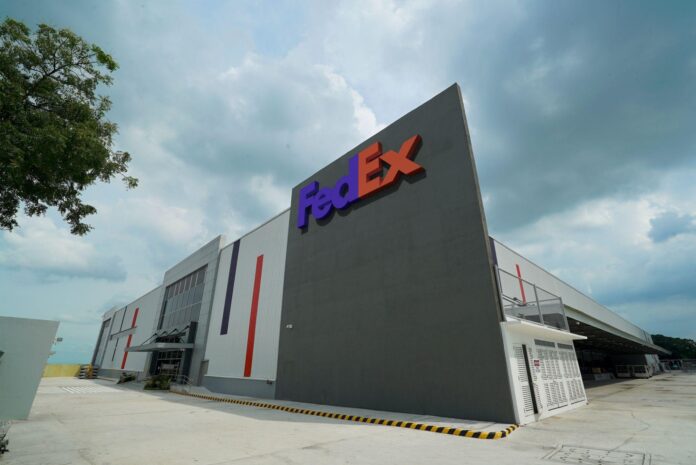
-
FedEx Express recently launched its 17,000-sqm gateway facility in Clark, Pampanga
-
The facility, which aims to boost support for the growing e-commerce market in the country, can sort 9,000 parcels per hour
-
It features a dedicated freight-handling area that spans 630 sqm, a cold storage facility, and a dangerous goods one-stop shop
Global express transportation company FedEx Express recently launched its gateway facility in Clark, Pampanga to boost support for businesses and the growing e-commerce market in the country.
The 17,000-square-meter (sqm) facility enables faster processing with the capability to sort 9,000 parcels per hour. It also has an expansive dedicated freight-handling area that spans 630 sqm.
FedEx in a statement said the facility supports the growing e-commerce demand for bulk shipments and large items, especially for the upcoming peak season shipping volumes.
In November 2019, FedEx announced it would expand its operations in Clark after the company left its Asian hub in Subic, Zambales in 2009 to transfer to China. The Clark facility was originally scheduled for launch in April 2021 but was delayed due to the COVID-19 pandemic.
READ: FedEx delays $30M Clark facility opening to July
The new Clark gateway features a cold storage facility for varying temperature-sensitive shipments. One unit has storage temperature capabilities ranging from -20°C to 5°C, or -4°F to 41°F, appropriate for storing vaccines, fresh produce, and raw products. Two other units have storage temperature of 5°C to 20°C, or 23°F to 68°F, appropriate for keeping vegetables and dry foods such as canned goods while also helping retain the freshness of products and maximize their shelf life.
Further, the facility has a dangerous goods one-stop shop, which offers customers an end-to-end shipping experience for dangerous goods and is fully compliant with International Air Transport Association guidelines.
“Plans for the Clark Gateway have been in place since before the demand for e-commerce soared. With a finger on the pulse of global trade, we made this strategic investment to enhance connectivity and support for Philippine businesses venturing into international markets,” FedEx Express president of the Asia Pacific, Middle East, and Africa region Kawal Preet said.
The facility allows businesses to access FedEx’s extensive network and expand its market reach with 36 flights coming in and out weekly, connecting customers to over 220 countries and territories.
In line with sustainability goals, the Clark gateway exclusively uses electric ground service equipment, replacing traditional units that run on fuel.
Bases Conversion and Development Authority president and CEO Vivencio Dizon said FedEx’s expansion in Clark boosts job creation, movement of goods, and economic activity in Northern and Central Luzon amid the COVID-19 pandemic.
“It also comes at an opportune time when the new Clark International Airport passenger terminal is set to start full operations, while infrastructure projects are in full swing to make access to and from Clark and New Clark City faster and more convenient than ever,” Dizon said.
Clark International Airport Corp. (CIAC) president and CEO Aaron Aquino said the investment “augurs how CIAC envisions the civil aviation complex as a service and logistics center and how this may be promoted operationally to help create revenue sources for the national government.”
FedEx said the opening of its Clark gateway facility is one of its strategic investments in the Philippines and across Asia-Pacific to enhance service coverage and customer experience.
From July to October 2021, FedEx launched a total of six new flights, contributing to a total of 225 weekly flights in and out of Asia Pacific to the U.S. and Europe.
In the same period, FedEx doubled capacity for the Philippines and other markets like Indonesia, Vietnam and Thailand by replacing 757 narrow-body freighters with 767 wide-body freighters. These aircraft have a maximum gross payload capacity of nearly 60,000 kilograms, building on the current FedEx operational strength.




